Monomorium Ants and Prickly Pear Cactus Fruit
Watcing Monomorium sp. Ants eating Prickly Pear Cactus fruit
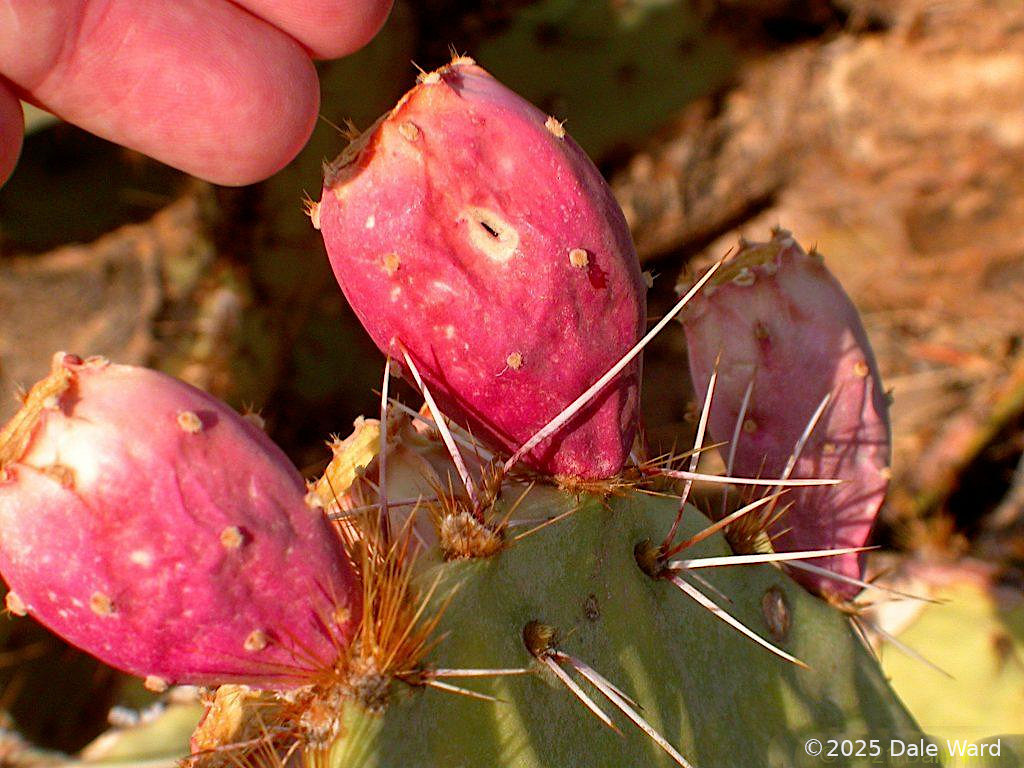 Prickly Pear Cactus fruit, with my fingers for scale. The slit with the brown area around it is where the _Monomorium_ were going in ant out of the fruit.
Prickly Pear Cactus fruit, with my fingers for scale. The slit with the brown area around it is where the _Monomorium_ were going in ant out of the fruit.
About a month after I watched the Forelius pruinosus eating the Sagauro Cactus fruit, I was watching tiny ants going in and out of a small slit in a Prickly Pear Cactus fruit.
These ants were (ludicrously) small - I couldn’t see them very clearly at all. The arrow in the photo below points to the slite the ants were using.
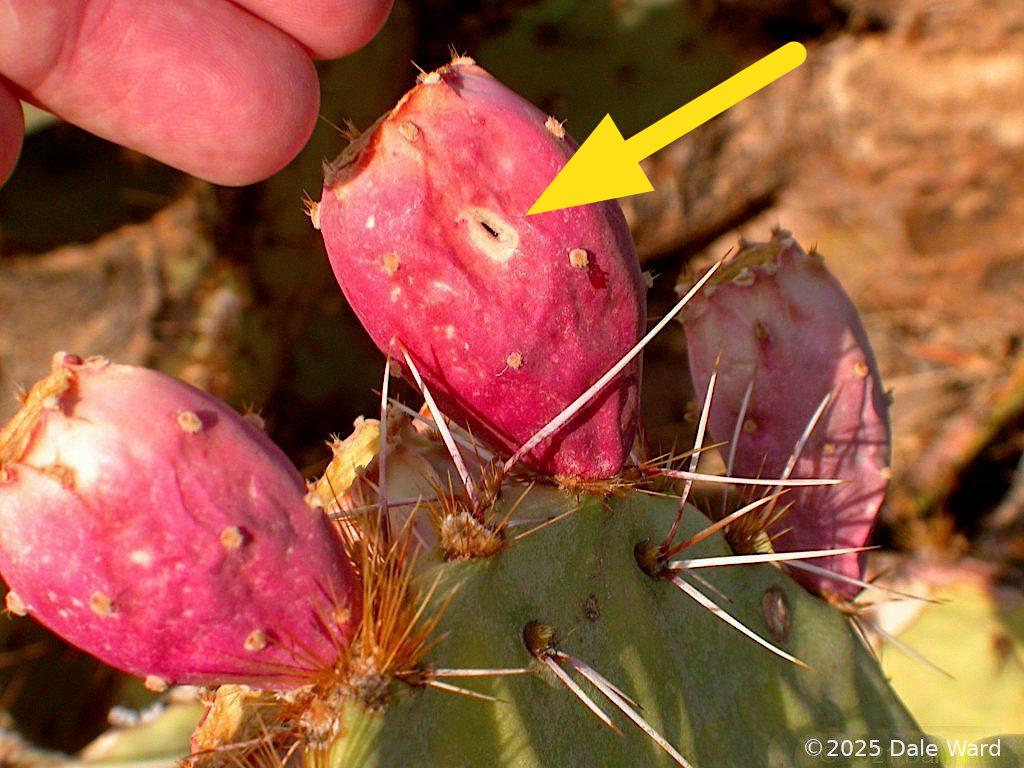 Arrow points to the slit in the fruit that the ants were using
Arrow points to the slit in the fruit that the ants were using
I believe they were ants in the genus Monomorium.
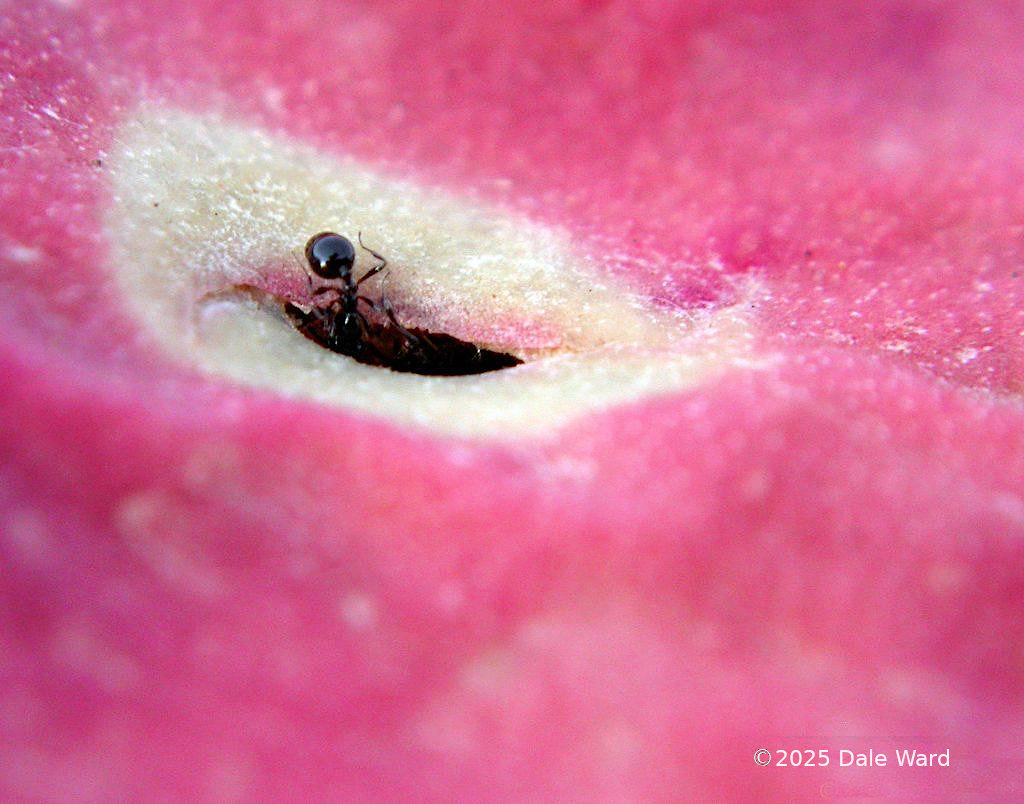 Monomorium worker entering the cactus fruit
Monomorium worker entering the cactus fruit
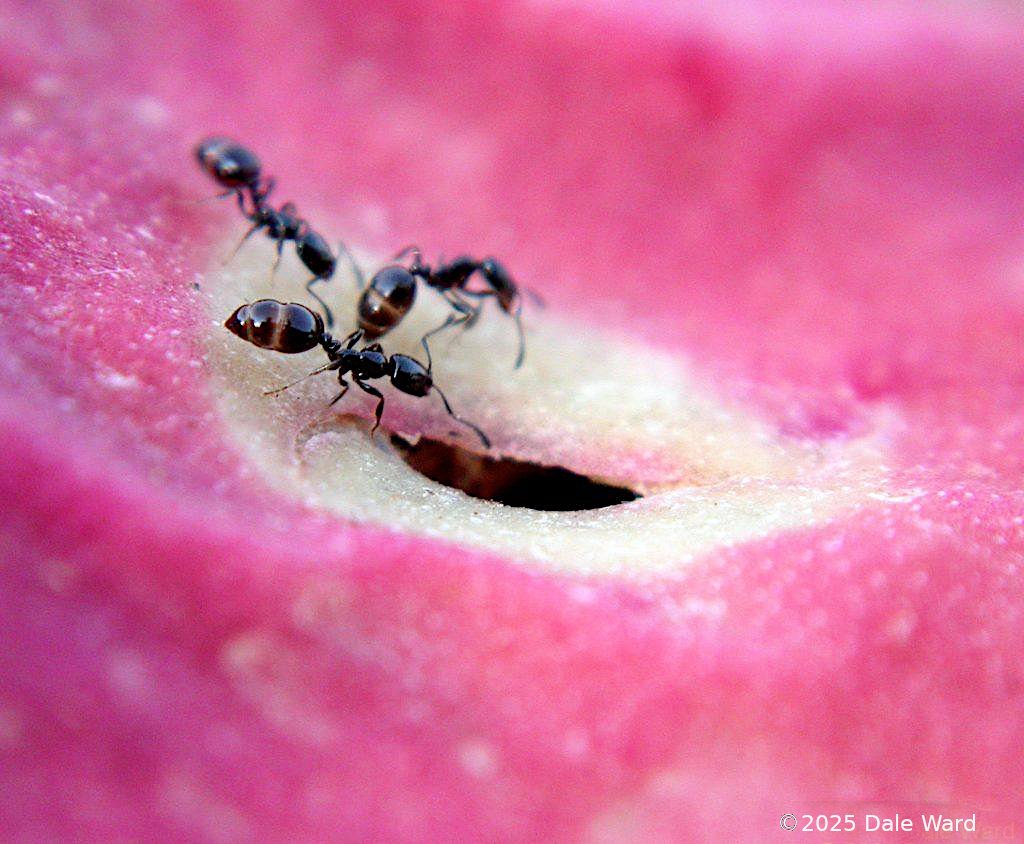 _Monomorium_ workers outside the cactus fruit. You can see by their swollen gasters that they have been feeding inside the fruit, and that the fruit’s juice is clear.
_Monomorium_ workers outside the cactus fruit. You can see by their swollen gasters that they have been feeding inside the fruit, and that the fruit’s juice is clear.
I wasn’t sure what the ants were doing inside the Prickly Pear fruit - I thought that the juice of prickly pears would be red, like the Saguaro fruit juice was.
I cut the fruit open to get a better look.
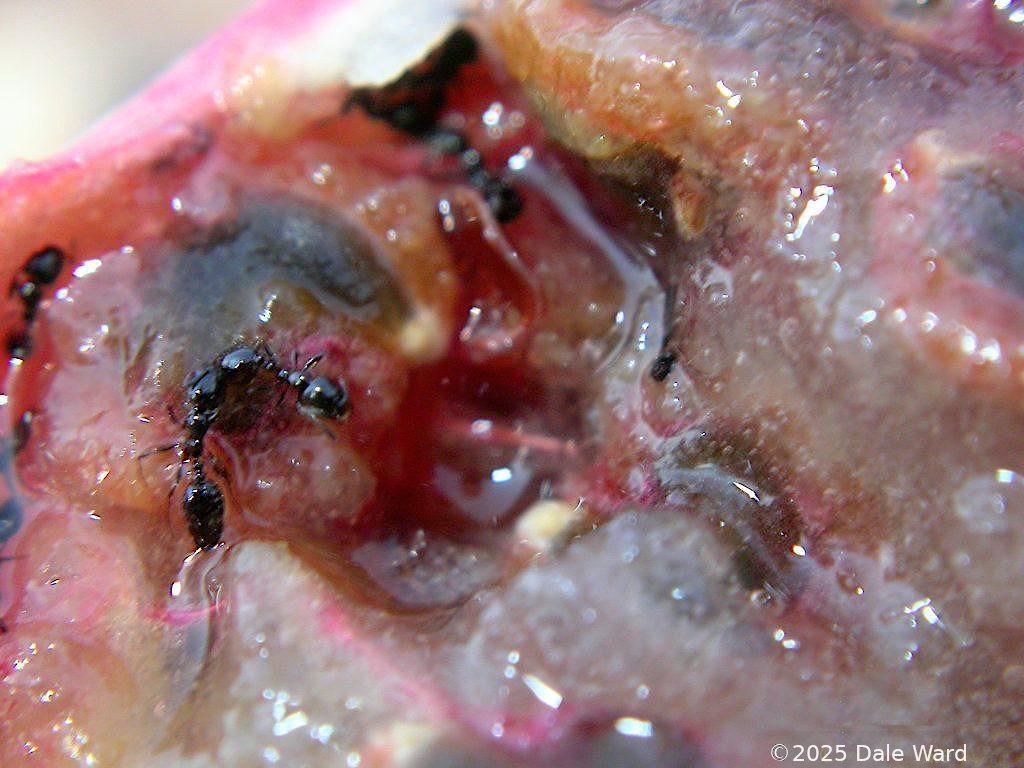 I cut the fruit in half. The ants had excavated a cavity where they were feeding.
I cut the fruit in half. The ants had excavated a cavity where they were feeding.
The ants had made a cavity inside the fruit and were feeding on juice, which was colorless.
I’m guessing that the ants had not made this opening into the fruit, since I had not regularly seen an opening into a fruit like this before. I’d assume that if the ants had made it, I would have seen more of these “doors” into the fruits, given what a bounty was inside.
Figure it must have been like a dream come true to them, a cave lined with sugary food.
Perhaps a bird had pecked at the fruit, and it split? Whatever happened, I think the original damage had happened some time ago. If you look at the first photo of the Prickly Pear fruity, you can see that there’s an area of normal red color on one edge of the slit, surrounded by the brownish discoloration surrounding the slit.
It’s also interesting that the slit in the Prickly Pear fruit looked a lot like the entrance slits in the Coccid Thorn Galls I’d seen in the Santa Rita Mountains. Here’s what that looked like:
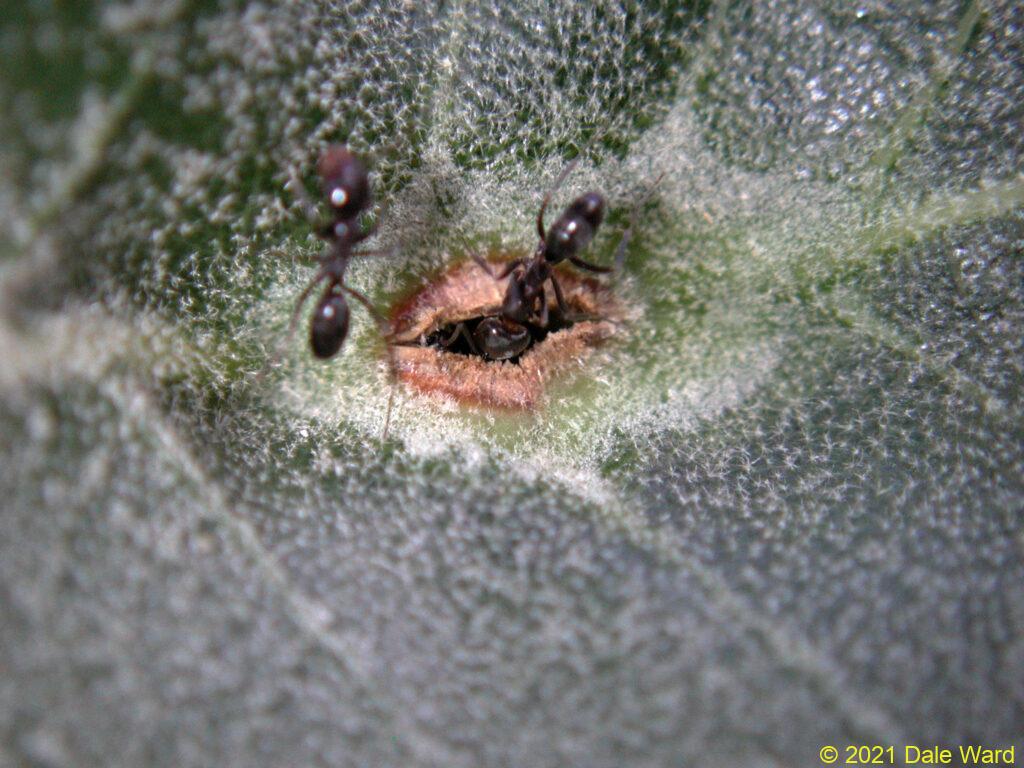 .
.
This observation scould be as un-meaningful as observing that “slits in plants look likeslits in plants”. But I thought it was pretty neat, nonetheless.